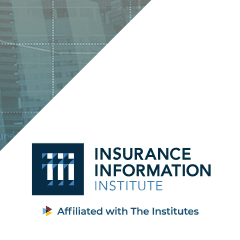
We’ve been following the initiatives launched by insurance companies to alleviate the impact of the coronavirus crisis (see Insurers Respond to COVID-19). Here are several more examples of insurers’ commitment to helping their agents, employees, customers, and the broader community weather the pandemic.
The Hanover has taken several steps to help ease the burden for customers, including:
- Considering a covered premise as “occupied” while mandatory closures are in effect
- Extending rental car days if a policyholder’s vehicle is in the shop and cannot be repaired or returned
- Paying additional living expenses to homeowners who are forced from their homes following a covered loss
- Offering flexibility on bill payment options for those experiencing financial hardship
- A 60-day hold on cancellations and non-renewals for non-payment
- Permitting business use of hired, non-owned autos for delivery purposes at no additional charge and extending personal auto coverage to individuals delivering food, medicine, and other essential goods at no additional charge
The company is also investing in relief efforts, including $500,000 to local non-profits to provide pandemic-related assistance to people and organizations across the country; donating critical medical supplies and masks to health professionals; and collaborating with corporate teambuilding company Cheeriodicals to deliver “cheer-up” gift packages to local hospitals to show appreciation for health care providers.
Liberty Mutual has created a $4 million fund offering low-threshold, immediate grants of up to $10,000 for 450 community partners – with priority given to groups providing healthcare or serving the homeless, elderly, and other populations deemed at highest-risk.
Liberty Mutual employees continue to be able to make online charitable donations that are supported further by company gifts.
The company has also enabled employees to work remotely and reports no impact to normal customer service operations.
The MetLife Foundation announced on March 31 that it is committing
$25 million to the global response to COVID-19 in support of communities
impacted by the pandemic.
The grant funding from MetLife Foundation will span all regions where MetLife
operates and address both short- and longer-term relief efforts.
“Supporting and protecting people is at the core of who we are and what MetLife stands for – in our business and in the Foundation’s giving,” said MetLife President and CEO Michel Khalaf.
Initial grants will support communities and people with urgent needs for food, healthcare, childcare, and direct financial support.
As part of this commitment, MetLife Foundation and other MetLife entities have already pledged $4 million to relief efforts in Asia, EMEA, Latin America, and the United States, including $1 million to U.S. food banks to help them deal with increased demand for their services as a result of coronavirus.
State Farm is donating millions of dollars to relief efforts, including Feeding America, American Red Cross, and the Illinois COVID-19 Response Fund. Additionally, the company has also donated hundreds of masks and other supplies to local hospitals and teamed up with the Atlanta Hawks to help provide meals to vulnerable populations and healthcare workers in Atlanta.
State Farm has also transitioned most employess to work from home arrangements and has set-up a matching-gift program in which employees donations to qualified nonprofits can be matched by the State Farm Foundation.
State Farm customers who are experiencing financial hardships are encouraged to call their agents to discuss assistance options.
Westfield Insurance is providing billing options for financial hardships and suspending all policyholder cancellations until May 31, 2020, or as directed by each state. Extended payment plan may be offered to those policyholders. As of March 20, 2020, late fees also will be waived through May 31, 2020, or as directed by each state.
Westfield will contribute nearly a million dollars toward nonprofit partners, including the Akron Canton Foodbank, Cleveland Foodbank, United Way of Cleveland, Feeding Medina County, and Feeding America.
Westfield’s foundation is matching employee donations to their local foodbank or United Way dollar for dollar up to $50. The company is also working with agency partners across the country to distribute Legacy of Caring grant dollars for them to donate to nonprofits in their community who are challenged because of COVID-19.
As a regulatory/government solution, trade groups representing insurers have voiced support for the proposed COVID-19 Business and Employee Continuity and Recovery Fund. It would be financed by the federal government and provide essential funds to impacted employers and employees.
Tell us how your company is contributing to the pandemic relief efforts: communications@iii.org.









